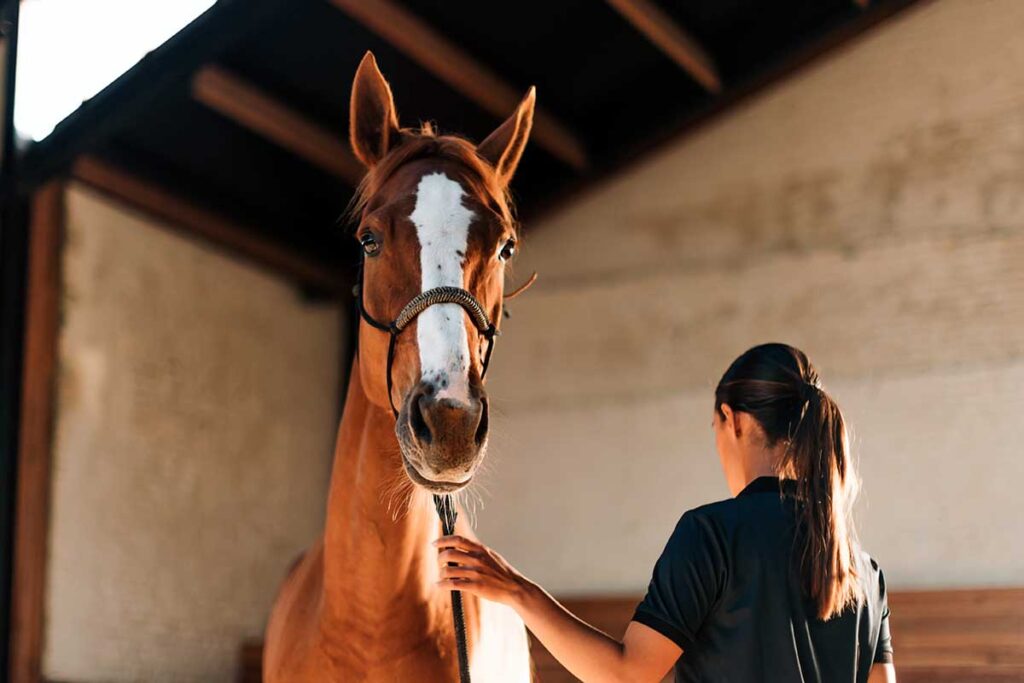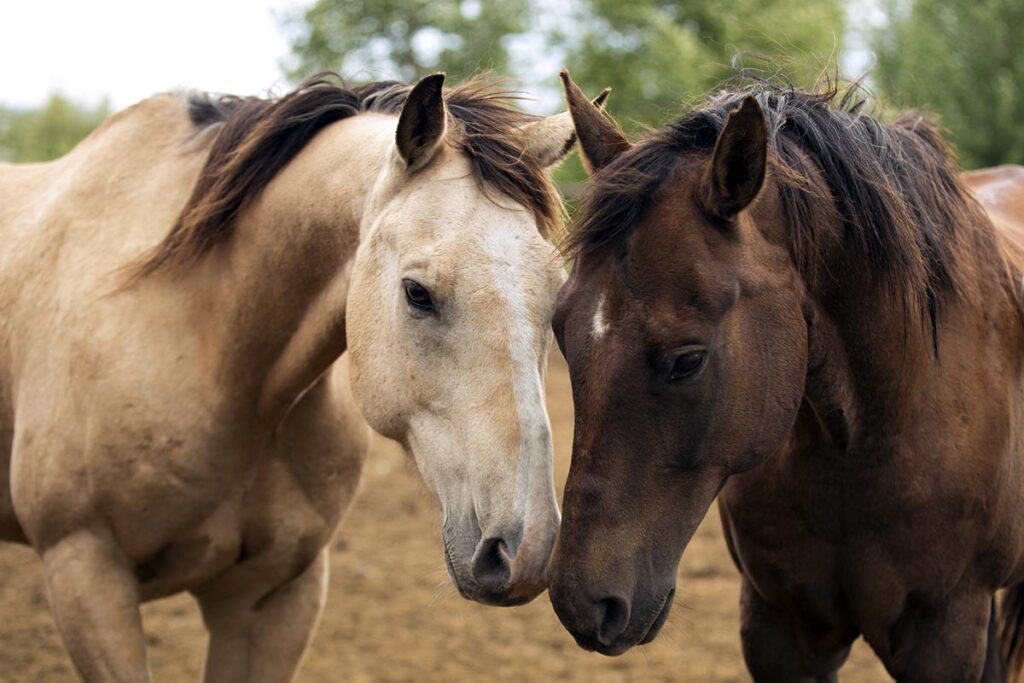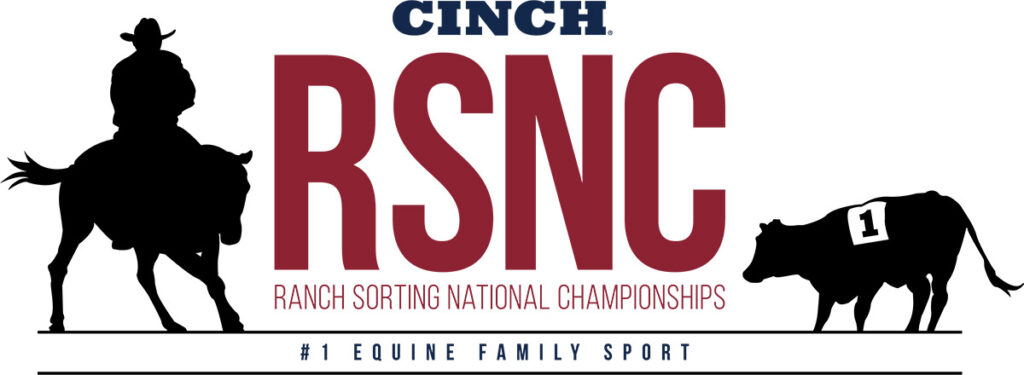One of the keys to a pleasant and comfortable ride—for horse and human alike—is a properly placed and secured saddle. Some parts of tacking up a horse are obvious. The horn, for instance, should face the front of a horse. Others (where do all those straps connect?!) can be confusing.
Wondering how to saddle a horse the right way? We’re here to help. In this comprehensive guide, we’ll walk you through the steps of saddling your horse the Western way.
Saddling Terms to Know
Before you get started, review your saddle vocabulary so there’s no confusion over which parts of the saddle are which:
- Cinch – The piece of equipment that passes beneath the horse’s belly to secure the saddle in place.
- Flank strap – The strap or cinch that holds the back end of the saddle down
- Latigo strap – The leather or synthetic strap that connects the cinch to a Western saddle.
- Gullet – The channel in the middle of the saddle that lies directly over the horse’s spine.
How To Put a Western Saddle on Your Horse

Follow these steps when tacking up:
- Groom your horse thoroughly so there’s no dirt or debris on his back that could cause rubs or chafing under the saddle. Also check the underside of your saddle pad, and remove any hay, burrs, or other debris.
- Stand at your horse’s left side, and place a square or contoured Western pad or blanket evenly atop his withers and back.
- Cross your stirrups, straps, and cinch over the top of the saddle to prevent them from banging or getting caught against your horse.
- Standing at your horse’s left shoulder, hoist the saddle gently onto the middle of the blanket. Slide it back off the withers and jiggle it from side to side until it settles into the correct spot.
- Lift the blanket up into the saddle’s gullet over the withers to prevent pressure in this area.
- Pull the cinch and straps back down, making sure they’re flat and not twisted against the horse’s side. Then buckle or tie the front cinch around the horse’s girth area to the latigo strap (for instructions on how to tie it, jump to the next section). If your saddle has a back cinch or flank strap, buckle this, as well. Make sure it’s loose enough that you can slip a hand between it and the horse’s belly.
- If your horse wears a breast collar, buckle its straps—one to each D-ring on the front of the saddle. The breast collar should lay flat above the point of your horse’s shoulders and should not be too tight. Clip the tiedown strap to the cinch’s D-ring, below your horse’s belly.
- To prevent cinch sores, pick up each front leg and pull it forward gently from behind the knee. This releases any skin caught beneath the cinch.
- Before you mount, check that your saddle is still placed appropriately and hasn’t slipped back or sideways. Then, tighten the cinch.
Reverse this process to take the saddle off.



How To Tie the Cinch Strap
Tie the cinch strap following these steps:
- Loop the latigo strap through the ring on the cinch, then back up and through the rigging dee ring (behind the top of the latigo strap.)
- Loop the strap back through the ring on the cinch again. You should now have one main loop connecting your cinch to your latigo.
- At this point, you can do one of two things. If your cinch is tight enough, you can fasten the cinch buckle using one of the holes in the latigo strap. Then loop the tail end of the strap through the keeper at the top of your saddle skirt. Your cinch should be snug enough around the horse’s girth, so the saddle does not slip or slide.
If your strap is longer, or there aren’t enough holes in it to secure the cinch tight enough, use the following steps to tighten and secure your cinch.
- Tighten the latigo strap until it is snug. To secure the strap, loop it back through the rigging dee ring and pull the strap to the left. Then pull it across the front of your latigo strap loop, behind the right side of the rigging dee and back through again. (Similar to how you would tie a tie.) Pull the end of the strap down through the horizontal loop you just made and tighten it to tie it off.
- To prevent the excess strap from dangling or interfering with your horse’s leg, loop it through the keeper or dee ring.
- Also make sure the buckle on your cinch is closed and not poking out where it could catch something or stab you in the leg.
Take-Home Message
Not all saddles are designed the same way, so your tacking-up process might vary from ours. Ask an experienced rider to check your work the first few times to make sure you’re doing it right. Also make sure your saddle fits properly and doesn’t have any damaged or broken parts. Then you’ll be ready to hit the trails!








